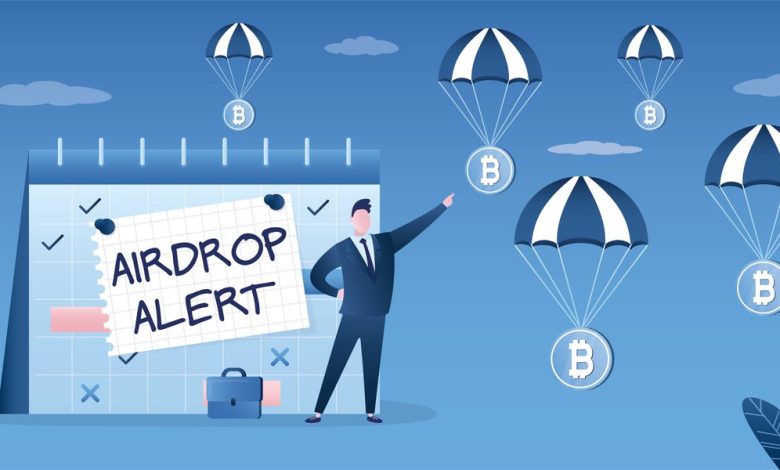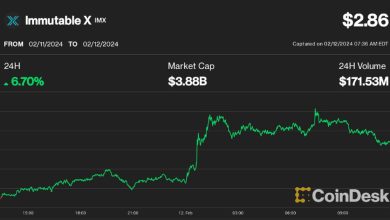Crypto Airdrops 2025 | How to Find and Claim Free Crypto Tokens

As nice as it would be for money to rain down from the sky, that doesn’t happen. However, it’s possible for crypto assets to drop into your crypto wallet, sometimes for free. With a crypto airdrop, you can receive free tokens or coins deposited into your wallet from a crypto company.
The purpose of crypto airdrops can vary but often involves a blockchain startup trying to build excitement around new projects by increasing awareness and rewarding early adopters. Airdrops can also help decentralize governance by spreading tokens around to a wider user base.
While getting money dropped into your crypto wallet may seem too good to be true, there’s a history of notable airdrops from Uniswap, Apecoin, and Arbitrum in recent years.
There are also many different types of crypto airdrops, such as standard, bounty, exclusive, and holder-based airdrops, which vary based on who gets the free tokens or coins.
However, not all crypto airdrops are the free lunch they seem to be. Crypto-airdrop scams are abundant, ranging from those used to set up a rug pull to others that are set up as phishing scams to steal private keys.
In this guide to crypto airdrops, we’ll take a closer look at what these are, how they work, how to find them, the risks involved, and more.
How Do Crypto Airdrops Work?
There are many different reasons for crypto project developers to execute crypto airdrops, such as if they’re trying to reward certain coin holders or decentralize governance. Regardless of the purpose, the main mechanism typically involves using smart contracts to deliver the crypto to specific users’ wallet addresses, similar to how a retailer might send rewards to a shopper’s email address.
More specifically, crypto airdrops can work as follows, depending on the type of airdrop:
Wallet Snapshots and Token Distribution
Many crypto airdrops are given to those holding specific tokens or using certain platforms. Project developers might take wallet snapshots to determine eligibility, meaning they’ll check a blockchain at a particular moment to see if your holdings meet their criteria.
Those interested in receiving the airdrop may have to register their wallet according to the developer’s instructions. Once everything checks out on the project developer’s end, they can initiate the airdrop using a smart contract so that the crypto moves to your wallet. The process length can vary dramatically, ranging from a few days to a few weeks.
Task-Based Airdrops and Community Campaigns
Some crypto airdrops are more dependent on recipients performing certain actions. These can vary significantly, such as promoting a cryptocurrency on social media, joining a newsletter, referring friends to the newsletter or community, or helping the project developers by debugging code.
More advanced technical tasks might involve participating in closed alpha/beta testing of new projects, also known as testnets, or other types of engagement that contribute to the strength of the community.
Claiming Airdrops Manually vs. Automatically
As mentioned, sometimes crypto airdrops require a more manual approach, where users must claim the airdrop via a smart contract or a project’s official channels. However, some tokens are sent directly to wallets automatically, without requiring input from users.
Individuals receiving airdrops need to keep their guard up, though, regardless of whether the airdrop is claimed manually or automatically. Always verify official claim URLs to avoid phishing scams that try to steal your sensitive information.
How to Find Upcoming Crypto Airdrops
There are many ways to find upcoming crypto airdrops, including the following strategies:
Airdrop Aggregator Sites
You can use platforms like Airdrops.io or EarnDrop that aggregate listings of new or potential airdrops. Some sites also have their own exclusive listings. You can set alerts or subscribe to these sites’ email lists to get notified about new airdrops. You can also set different filters based on what you’re looking for, such as viewing different airdrops based on what blockchain they’re on.
Follow Crypto Projects and Launchpads
Another way to find upcoming airdrops is to follow particular crypto projects by keeping up with their X accounts or joining their Discord servers or Telegram groups. You can also follow crypto launchpads, where new projects find initial buyers and where developers might announce airdrops for early users.
Join and Monitor Web3 Ecosystems
Similar to following particular projects and launchpads, you might engage within Web3 ecosystems to learn about upcoming airdrops.
For example, engaging with testnets and decentralized apps might help you find out early about potential airdrops. Certain crypto wallets and bridges might also be potential airdrop targets, so you might try to use ones that you see potential in or hear rumors about being likely to receive airdrops.
As always, be vigilant and be cautious about wasting time or money using platforms or engaging in groups just for potential airdrops that might not end up providing much value.
How to Qualify for Crypto Airdrops
As mentioned, there are many different types of crypto airdrops, which have corresponding qualification requirements. Some of the most common ways to qualify for airdrops include the following:
Hold or Stake Eligible Tokens
Keeping certain tokens in your wallet during snapshot periods could make you eligible for airdrops, such as holding or staking ATOM or SOL. Using non-custodial wallets like MetaMask or Best Wallet, where you hold the private keys, makes it more likely you’ll qualify for airdrops, since the tokens are tied to your address, not an exchange.
Participate in Ecosystem Activities
Another way to qualify is to get involved in an ecosystem, which could mean swapping, staking, or lending crypto using early-stage decentralized apps or getting involved in activities like voting in DAO proposals, commenting within communities, or even just signing up for a newsletter.
Join Early User or Beta Tester Programs
A more specific form of engagement, such as signing up for testnets, could make you eligible for airdrops, too. But consider the risks, such as disclosing personal information as part of the testing.
How to Claim and Store Airdropped Tokens
Qualifying for airdrops is only part of the process. To claim and store these airdropped tokens, consider the following:
Verify the Airdrop Source
Before registering to claim airdrops, make sure you do your due diligence. Only sign up via official links, such as from a project’s verified website or social media account. You might want to check with other community members or trusted aggregators too.
If you’re not careful, you might connect your wallet to fake claim portals that steal sensitive information and potentially drain your wallet.
Use a Compatible Wallet
If you’re confident in the source, you then need to connect a compatible wallet or use one that might automatically receive airdrops. Non-custodial wallets like MetaMask, Best Wallet, or Trust Wallet could be good choices, but much depends on your preferences and how the crypto airdrop landscape evolves.
Make sure your wallet supports the right blockchain and token standard to receive the airdrop. Some platforms even recommend setting up a wallet specifically for airdrops, which can help segregate your main crypto assets from those you receive via airdrops, which can potentially reduce the risk of fallout from scams.
Track and Manage Your Airdrop Portfolio
Once you start receiving airdrops, you can use tools like CoinStats or DeBank to track your assets, especially if you’re holding them across multiple wallets. Consider nuances like token unlock schedules/vesting periods or restrictions on trading airdropped coins or tokens for a given period. By staying on top of these, you can determine when/if to sell what you receive via an airdrop.
If you have low-value and/or high-risk airdrops, consider converting them into assets like stablecoins so that you can retain the current value, rather than risking the project becoming inactive and the crypto becoming worthless.
Risks and Considerations with Crypto Airdrops
While airdrops may seem like gifts, they are not without risks. Consider issues such as:
Scams and Fake Airdrops
Plenty of scams exist around airdrops, such as ones that are tied to phishing campaigns or that try to build hype around a coin so that others buy in, before the project developer sells it and crashes the price. This scheme is known as a rug pull. Sometimes this involves sending worthless tokens that resemble more legitimate projects.
Watch out for red flags like project developers that make big promises or try to rush you into signing up before you can do your due diligence. Only click on links you trust.
Remember to never enter your private key or seed phrase to receive airdrops. Doing so isn’t necessary for legitimate projects and is not worth the risk, as it can lead to a scammer draining your wallet.
You should also try to verify a smart contract before entering one. You can use tools like Etherscan for more transparency around a particular project’s blockchain activity, depending on what chain it’s built on.
Tax Implications of Airdrops
Airdrops received by an investor are treated by the federal government as taxable income. Make sure you record the value of any airdrops upon receipt, and consider discussing specific tax strategies with a tax professional who has experience with crypto.
While crypto airdrops can be a nice reward, they come with a cost. Minimally they trigger taxes, and in the worst cases, such as scams, they can lead to theft.
Frequently Asked Questions (FAQ) About Crypto Airdrops
Are crypto airdrops really free?
Yes, crypto airdrops are often free, though your time or financial investment varies by project. Some require you to hold certain coins or complete certain tasks before qualifying for an airdrop.
How do I know if I’m eligible for an airdrop?
Eligibility varies by airdrop. Check aggregator sites that list new and potential airdrops along with eligibility requirements, and view the official project channels that lay out the terms. If you don’t see clear guidelines, it’s probably best to skip.
What’s the safest way to claim an airdrop?
The safest way to claim an airdrop can be context-dependent, but in general, only click on links you trust through a project’s official channels and consider accepting airdrops in a wallet that’s separate from your main crypto holdings.
Created by the Commerce team at Business Insider with Best Wallet.




